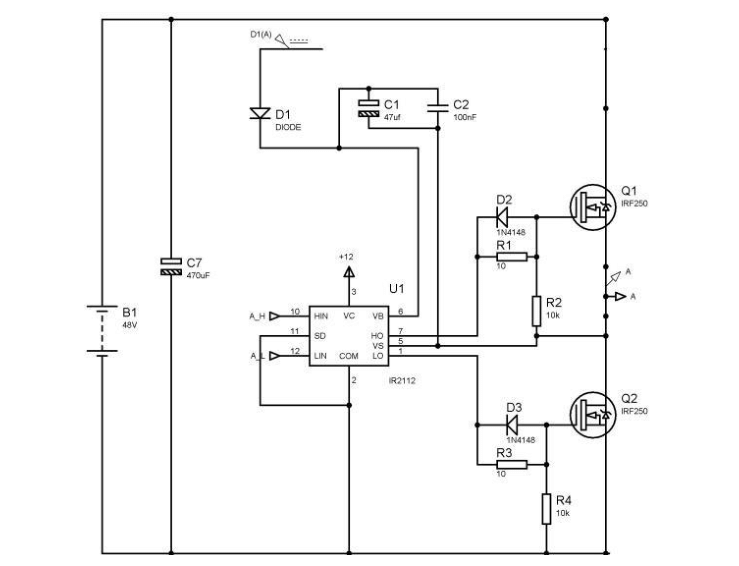MOSFET High-Side Driver Tips – SmartXProKits

🛠️ The Problem: Driving a MOSFET on the High Side
When using an N-channel MOSFET as a high-side switch (i.e., between the power supply and load), the gate voltage must be higher than the source voltage to fully turn it on. This creates a challenge since the source is now at the supply voltage. Without proper drive, the MOSFET remains in the linear region—causing heat, inefficiency, or failure.
✅ The Solution: Use a Gate Driver or Bootstrap Circuit
The easiest fix is to use a high-side gate driver or a bootstrap circuit that temporarily boosts the gate voltage above the supply. ICs like IR2110 or dedicated half-bridge drivers handle this automatically. For slower switching or DC applications, a P-channel MOSFET may be easier, though less efficient.
⚙️ Practical Example :
Controlling a 12V motor from an Arduino using an N-channel MOSFET on the high side won’t work with a direct GPIO signal (only 5V). Use a gate driver like IR2110 to lift the gate voltage to ~24V for full conduction.
🔢 Sample Calculation :
To fully turn on an N-channel MOSFET with a V<sub>GS(th)</sub> of 4V, and source at 12V:
Gate voltage = Source + V<sub>GS</sub> = 12V + 10V = 22V
🛒 Product Suggestion :
Explore “MOSFET driver” or “N-channel MOSFET” here:
👉 Shop now at SmartXProKits.in
🇮🇳 Support our work and India’s innovation—buy from our Make in India site!




















